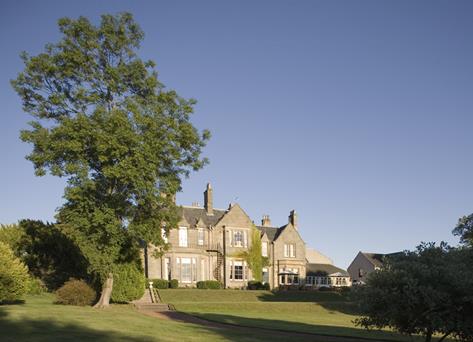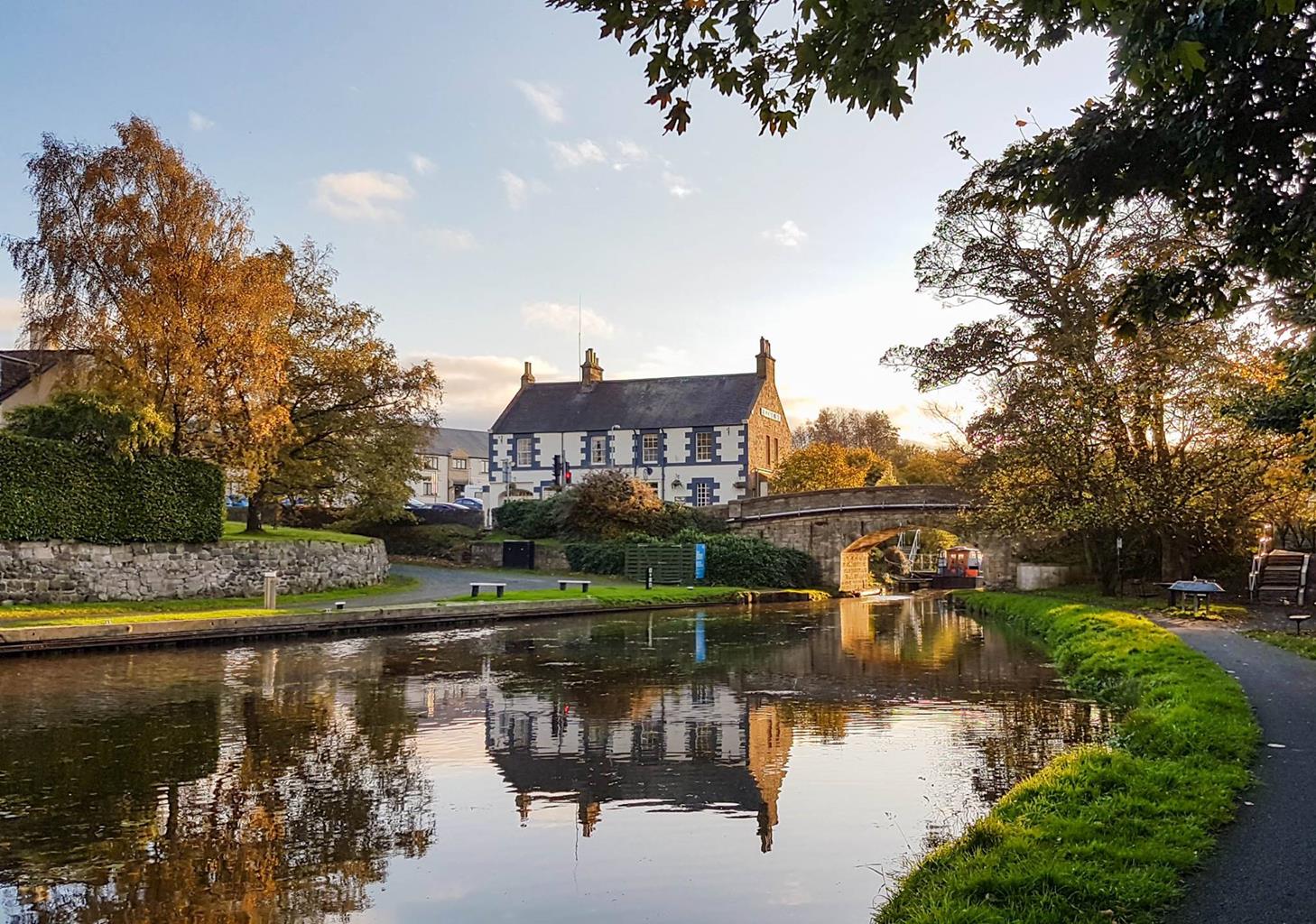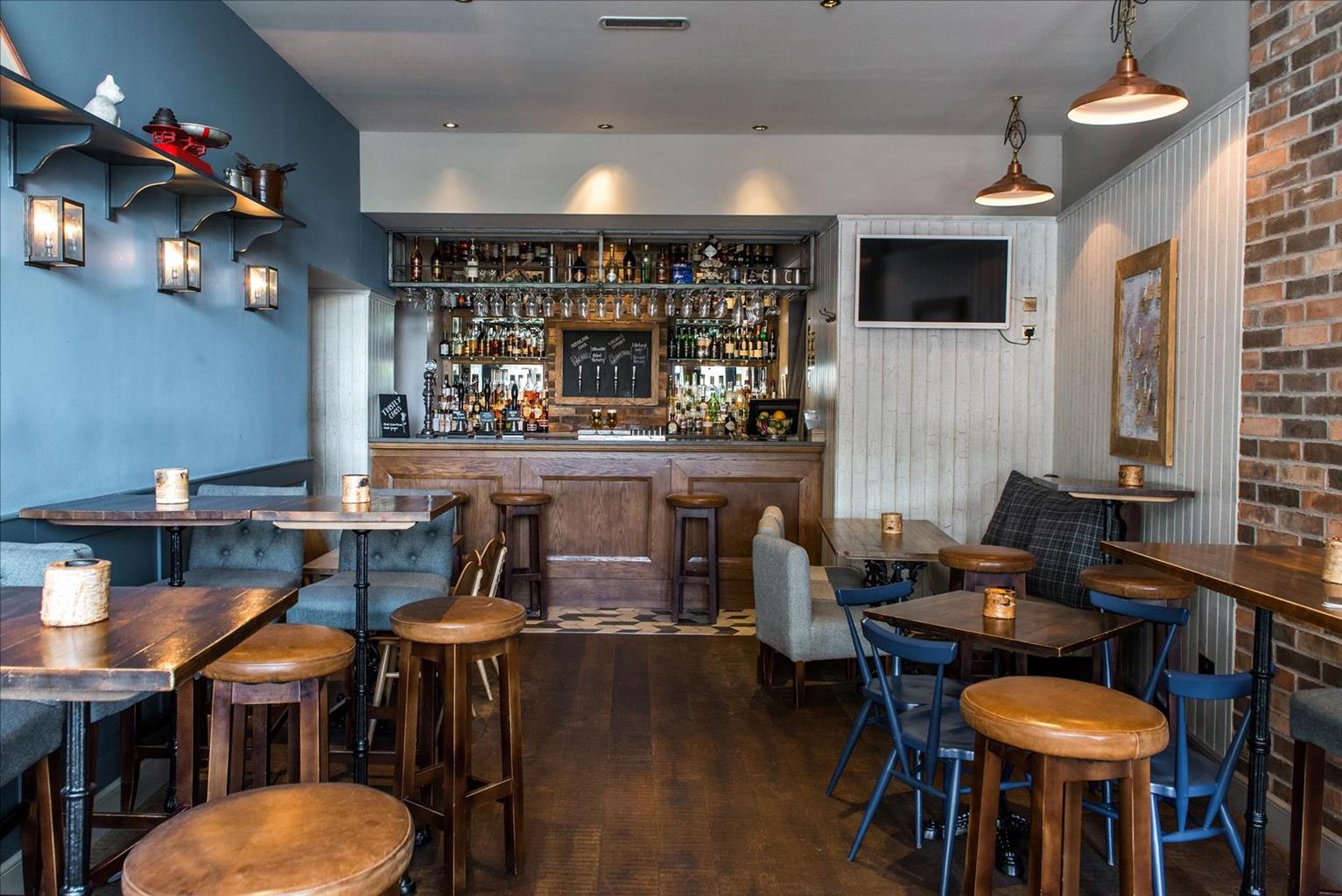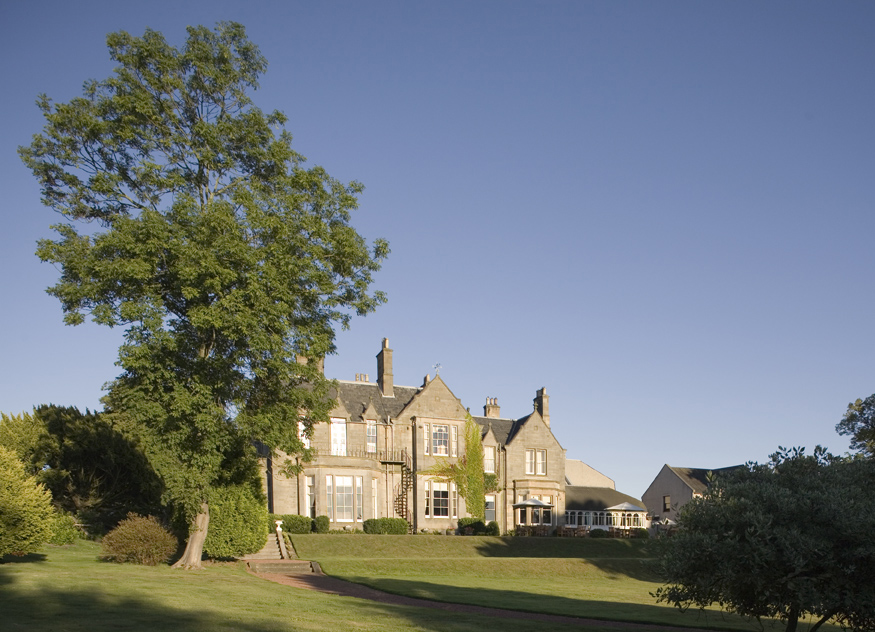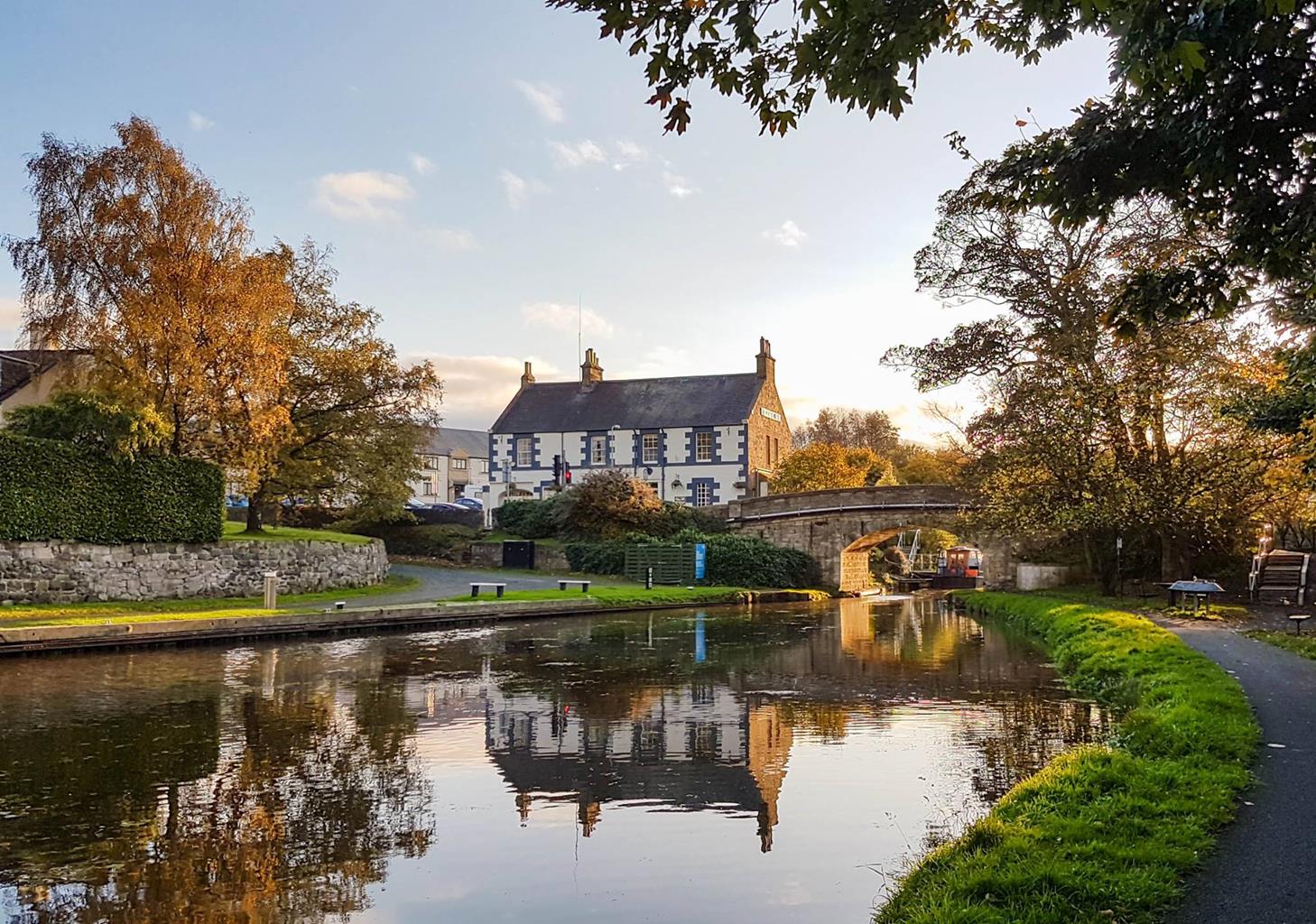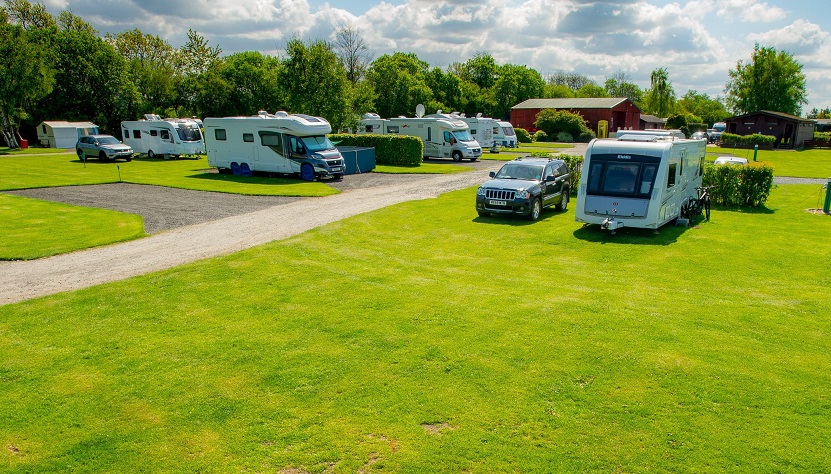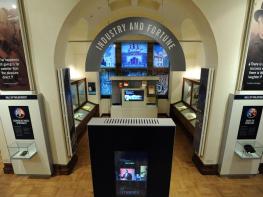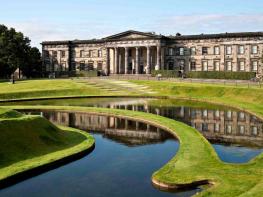Norton House is an extended Victorian mansion, set in 55 acres of parkland, peacefully situated…
Around Dalmeny Park

An easy stroll in the shadow of the Forth Bridge, one of Scotland's greatest engineering feats
6 miles (9.7kms)
About the walk
As its name suggests, South Queensferry was once a haven for the ships that carried passengers across the Firth of Forth to Fife. The last ferries ran in 1964, when they were finally made redundant by the Forth Road (suspension) Bridge. But even before that, they had begun to lose business to trains carrying passengers and freight across one of the great engineering achievements of the 19th century.
An engineering marvel
The Forth Bridge was completed in 1890. A mile and a half (2.4km) long and 360ft (110m) high, it took seven years to build, and 57 workers died in its making. Its architect was Sir Benjamin Baker, the engineer who created much of the London Underground. Baker was not the first choice – he replaced Sir Thomas Bouch, who was a year into designing the bridge when he was disgraced by the collapse of his Tay Bridge, which linked Fife and Dundee and blew down during a severe gale, taking a train and 75 people with it.
Baker’s Forth Bridge has proved to be much sturdier, but maintaining it against the elements has always been a battle – ‘painting the Forth Bridge’ was once synonymous with undertaking a never-ending task.
Islands in the Firth
A handful of rocky islands lie between South Queensferry and the Fife shore. Inchcolm, with its ruined medieval abbey, is home to seals and seabirds. Inchmickery, bristling with gun emplacements and control towers that are relics of two world wars, looks like a giant, permanently anchored battleship. Local legend says it was deliberately altered to look like this to decoy German submarines into wasting their torpedoes on its rocks. Inchgarvie was also heavily fortified to defend the bridge and the naval dockyards at Rosyth.
The most remote island is Inchkeith, which was the setting for a bizarre experiment in the early 1500s. James IV marooned a pair of babies here with only a deaf and dumb nurse for company, to discover if they would spontaneously develop the power of speech (apparently he expected them to speak Hebrew, which he believed to be the world’s first language).
Walk directions
With your back to the 16th-century Hawes Inn, cross the road and turn right. Take the tarmac path that runs off to the left, underneath the Forth Bridge. The rocks on the left are often dotted with seals, basking in the sun. Keep following the asphalt track and you'll soon get great views of the bridge behind you.
When you reach Long Craig Pier go through a white gate. Keep on the track, passing two cottages. Eventually the landscape opens out and you'll see the large tanker berth out in the Forth. Oil is unloaded here, then pumped to a storage depot near Dalmeny. Your track then runs straight ahead until bearing sharp right at Hound Point. There is a beautiful stretch of sand here, and you get a good view of the islands in the Forth. In front of you, towards the Fife coast, is Inchcolm with its ruined medieval abbey.
Continue past Fishery Cottage on the left-hand side, then through another white gate. At a branching of tracks, maintain direction along the coast to follow the Shore Walk. Eventually you'll pass the gate to Barnbougle Castle on the left-hand side, and the path then leads up to get great views of Dalmeny House, the palatial home of the Earls of Rosebery. It has a large collection of French furniture and tapestries, and paintings by Gainsborough, Raeburn and Reynolds.
Bear round to the right, keeping the house on your right-hand side, until you reach a crossroads by a statue of a horse. Go straight ahead, following the driveway uphill with railings on your right, and continue until you reach the gates at the entrance to the estate. Cross the main road with care and continue walking along the road in front of you. This will eventually bring you into Dalmeny village, which has a lovely little Norman church, St Cuthbert's. Dating from the 12th century, the church boasts the most complete example of Romanesque architecture in Scotland. The doorway is exquisite, its two arches bearing elaborate carvings of fantastic beats and grotesque heads. Near the altar is a stained glass window given by a Polish airman stationed in Scotland during World War II.
Leaving the church, turn right at the war memorial and walk downhill – you'll see the bridge again. Turn left along Station Road, walk under the railway bridge, then turn right immediately to follow the narrow path by a housing estate, signposted to Hawes Pier. Go up some steps at the end to cross a bridge over an old railway line, which is now a cycleway. Then turn left and walk round the margin of the fenced area (used by the company working on the bridge).
Turn right to walk under the Forth Bridge. When you reach the other side you'll see a long, steep flight of steps running down to the left. Walk down these to come out at the bridge again. Turn left and walk back to the Hawes Inn, where Robert Louis Stevenson stayed while he wrote the novel Kidnapped (1886). In the novel, David Balfour's wicked and miserly uncle Ebenezer arranges the kidnap of his nephew at this very place.
Additional information
Firm coastal tracks and quiet roads
Secluded estuary in the shadow of the historic Forth Bridge
Lead required on Dalmeny Estate
AA Walker's Map 27 Edinburgh
On street opposite Hawes Inn, in South Queensferry and at station
South Queensferry
WALKING IN SAFETY
Read our tips to look after yourself and the environment when following this walk.
Find out more
Also in the area
About the area
Discover Edinburgh
Edinburgh is one of Britain’s most spectacular cities and both Old and New Towns have UNESCO World Heritage status. At its heart, the Old Town is a treasury of architecture stretching back to medieval times with its labyrinth of narrow lanes (‘wynds’ or ‘closes’). While the New Town's splendid district of squares, crescents and gardens are surrounded by impressive Georgian town houses.
It isn’t just a magnificent, bustling city, it’s surrounded by countryside – offering visitors the best of both worlds. Dominated by hills and the sea, with the rolling Pentland Hills to the south and the broad expanse of the Firth of Forth estuary to the north, it benefits from a rugged and varied landscape. So much so, the city has its own miniature mountain, Arthur’s Seat, which looms over the Old Town and the Palace of Holyroodhouse, dwarfing even Castle Rock and its crowning fortress, Edinburgh Castle.
A couple of miles east, Portobello is Edinburgh’s seaside area, with a long stretch of golden sand that attracts droves of city dwellers on sunny summer days.
Nearby stays
Restaurants and Pubs
Nearby experiences
Recommended things to do
Why choose Rated Trips?
Your trusted guide to rated places across the UK
The best coverage
Discover more than 15,000 professionally rated places to stay, eat and visit from across the UK and Ireland.
Quality assured
Choose a place to stay safe in the knowledge that it has been expertly assessed by trained assessors.
Plan your next trip
Search by location or the type of place you're visiting to find your next ideal holiday experience.
Travel inspiration
Read our articles, city guides and recommended things to do for inspiration. We're here to help you explore the UK.





